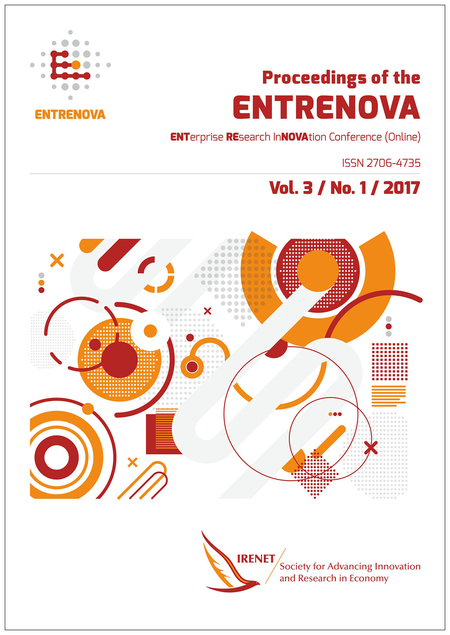How Students as Consumers Learn Information about New Products
Ključne riječi:
consumers, new products, consumer behaviour, marketing, innovation, developmentSažetak
The importance of understanding how consumers gather and evaluate information about the new products is essential for providers. This paper considers the student population as consumers and attempt to determine where students as consumers learn information about new products and their attitudes toward different sources of information. Research was conducted at the Polytechnic in Sibenik and comprised students of all majors and years of study. Results indicated that students as consumers utilize a wide variety of information sources to learn about new products. Thus gender, as a major social category, age and other determinants of consumer behaviour were also considered. It concludes with some important marketing implications.

This work is licensed under a Creative Commons Attribution-NonCommercial 4.0 International License.
Reference
Bettman, J. R. (1970), “Information processing models of consumer behavior”, Journal of Marketing Research, Vol. 7 No. 3, pp. 370-376.
Bray, J. (2008), „Consumer Behavior Theory: Approaches and Models“, available at: http://eprints.bournemouth.ac.uk/10107/1/Consumer_Behaviour_Theory_- _Approaches_%26_Models.pdf (12 January 2017)
Denona Bogović, N. (2002), “Dugoročna obilježja osobne potrošnje u Republici Hrvatskoj”, Ekonomski pregled, Vol. 53 No. 7-8, pp. 622-639.
Gregan‐Paxton, J., Hibbard, J. D., Brunel, F. F., Azar, P. (2002), “So that's what that is”: Examining the impact of analogy on consumers' knowledge development for really new products”, Psychology & Marketing, Vol. 19 No. 6, pp. 533-550.
Im, S., Bayus, B. L., Mason, C. H. (2003), “An empirical study of innate consumer innovativeness, personal characteristics, and new-product adoption behaviour”, Journal of the Academy of Marketing Science, Vol. 31 No. 1, pp. 61-73.
John, D. R., Cole, C. A. (1986), „Age differences in information processing: Understanding deficits in young and elderly consumers“, Journal of consumer research, Vol. 13 No. 3, pp. 297-315.
Johnson, E. J., Russo, J. E. (1984), “Product familiarity and learning new information”, Journal of consumer research, Vol. 11 No. 1, pp. 542-550.
Kahraman, C., Büyüközkan, G., Ateş, N. Y. (2007), „A two phase multi-attribute decision-making approach for new product introduction“, Information Sciences, Vol. 177 No. 7, pp. 1567-1582.
Kiel, G. C., Layton, R. A. (1981), “Dimensions of consumer information seeking behaviour”, Journal of marketing Research, Vol. 18, pp. 233-239.
MacInnis, D. J., Folkes, V. S. (2010), “The disciplinary status of consumer behaviour: A sociology of science perspective on key controversies“, Journal of Consumer Research, Vol. 36 No. 6, pp. 899-914.
Nelson, P. (1970), “Information and consumer behaviour”, Journal of political economy, Vol. 78 No. 2, pp. 311-329.
Sammer, K., Wüstenhagen, R. (2006), “The influence of eco‐labelling on consumer behaviour–Results of a discrete choice analysis for washing machines” Business Strategy and the Environment, Vol. 15 No. 3, pp. 185-199.
Solomon, M. R. (2014), Consumer behavior: Buying, having, and being, Engelwood Cliffs, NJ, Prentice Hall, Vol 10.
Taylor, J. W. (1974), „The role of risk in consumer behavior“, The Journal of Marketing, pp. 54-60.
Ward, S., Wackman, D. B., Wartella, E. (1977), How children learn to buy: The development of consumer information-processing skills, Sage Publications, Beverly Hills, CA.

